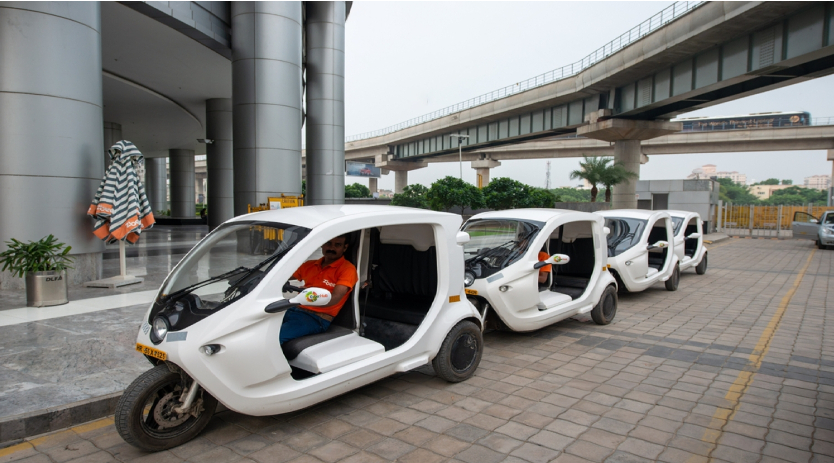Red Hat and General Motors Collaborate to Trailblaze Future of Software-Defined Vehicles
May 26, 2022 3:21 pm
Industry leaders intend to redefine the transportation landscape with a continuous functional-safety certified, Linux-based in-vehicle operating system.
Red Hat, Inc., the world’s leading provider of open source solutions, and General Motors announced a collaboration to help advance software-defined vehicles at the edge. The companies expect to expand an ecosystem of innovation around the Red Hat In-Vehicle Operating System, which provides a functional-safety certified Linux operating system foundation intended for the ongoing evolution of GM’s Ultifi software platform.
The collaboration between Red Hat and GM is a significant moment in the convergence of the transportation and technology industries, with Red Hat’s cloud-native, enterprise-grade open source operating system accelerating the development of GM’s software-defined vehicle programs following Ultifi’s initial launch. This will enable both companies to offer customers more valuable features responsibly in a fraction of the typical development time.
In-vehicle software systems are complex and require high levels of cybersecurity protection and stringent certifications due to critical safety priorities. In current systems, these robust requirements can often lengthen the development process and make vehicle software updates difficult, with each update requiring recertification. Together, GM and Red Hat intend to make these complex vehicle updates simpler and more frequent by implementing continuous functional-safety certification into the Ultifi platform with Red Hat
In-Vehicle Operating System pioneering the continuous certification approach, announced last year.
The integrated software is expected to support a variety of in-vehicle safety- and non-safety-related applications, including infotainment, advanced driver assistance systems, body control and connectivity. The transportation industry can benefit from faster innovation and better sustainability through standardization with open source Linux and cloud-native technologies. Common standards can help increase software reuse and achieve a more scalable design process, giving GM the ability to dedicate more resources toward new personalized in-cabin experiences, vehicle modes and other features customers will enjoy.
With the integration of the Red Hat In-Vehicle Operating System into the Ultifi platform, GM and Red Hat look to achieve:
- Reduced costs from consolidation and reuse of software across a common platform
- An improved development cycle for faster time-to-market with new customer features and software improvements
- A continuous functional safety certification for systems related to safety applications
- Creation of new services, business models and revenue streams.
Red Hat will contribute to the phased rollout of Ultifi, GM’s end-to-end vehicle software platform which will launch in 2023. Ultifi will enable a frequent and more seamless delivery of software-defined features, apps and services to customers over-the-air. To do this, the platform separates the application software from the hardware to offer application program interfaces for software development. Creating a more flexible architecture unlocks the potential for more cloud-based services, faster software development and new value for customers without affecting basic hardware controls.
As a Linux-based system, Ultifi is designed to be universally usable for GM developers, suppliers and the developer community at large. Using Linux allows for skilled talent from many industries to quickly get up to speed and bolster innovation through non-traditional thinking. With numerous sensors and rich amounts of anonymized data, vehicle software presents a uniquely exciting opportunity for developers to work beyond the limits of typical consumer smart devices. In fact, authorized third-party developers who meet strict security, safety and privacy standards will be given access to innovate on Ultifi to benefit GM customers directly.
The automotive industry is at an inflection point as consumers begin to assess what the future of their driving experience could look like. As open source and automotive leaders, respectively, Red Hat and GM are poised to help define and connect the automotive ecosystem that will drive solutions for next-generation vehicles. Bringing Red Hat In-Vehicle Operating System to the transportation industry better equips automakers to adopt rapid, open source innovation in the present and in the future.
Francis Chow, vice president and general manager, In-Vehicle Operating System and Edge, Red Hat
Said, “With millions of lines of code sustaining critical systems like driver assistance, fuel economy and more, modern vehicles are more like mobile high performance computers than the cars of the past. The time to innovate is now. These new vehicles give our industries a chance to create a common open platform without sacrificing functional safety. By collaborating with GM on the Red Hat In-Vehicle Operating System, we intend to bring the era of open source to the automotive world, benefiting automakers, ecosystem partners and consumers.”
Scott Miller, vice president, Software Defined Vehicle and Operating System, General Motors states,
“General Motors is now a platform company and working with Red Hat is a critical element in advancing our Ultifi software development. Incorporating the company’s expertise in open source solutions and enterprise networks will pay dividends as we aim to provide the most developer-friendly software platform in the industry. With Red Hat’s operating system as a core enabler of Ultifi’s capabilities, the opportunity for innovation becomes limitless.”
Alex Oyler, director, North America, SBD Automotive says, “While the automotive industry has been trying to find ways to leverage the open-source community for the past decade, the rise of the software-defined vehicle signifies their conjunction. The massive addressable domain of in-vehicle and edge software in modern vehicles necessitates an ecosystem-driven approach to reduce software development costs for automakers, nearly half of which is dedicated towards maintenance and triage. At the same time, maintaining strict compliance with safety standards mandates high levels of assurance in the underlying software. This partnership typifies the type of innovation possible when tech and automotive stalwarts combine their core experiences to create novel solutions that form the foundation of the software-defined vehicle.”
Cookie Consent
We use cookies to personalize your experience. By continuing to visit this website you agree to our Terms & Conditions, Privacy Policy and Cookie Policy.

















